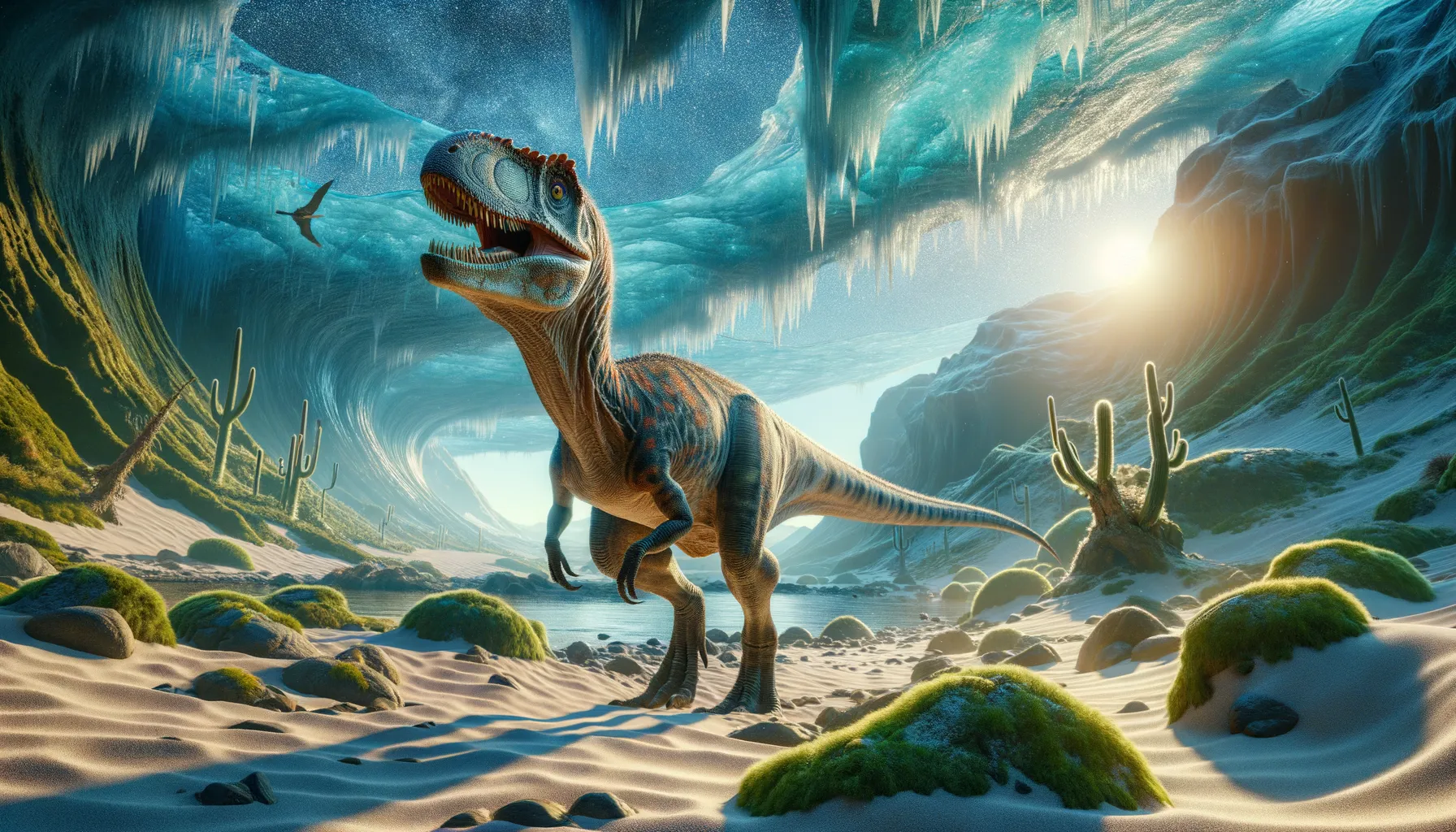
Pampadromaeus
Swift and small, a Triassic marvel.
Period
Triassic
Length
Approximately 1.5 meters long.
Height
Roughly 70 centimeters tall.
Weight
Estimated around 15 kilograms.
Pampadromaeus was a small, agile dinosaur that roamed South America during the Late Triassic period. It was an early theropod, showing characteristics that hint at its connection to later, more famous carnivorous dinosaurs. Known for its lightweight build and relatively swift movements, it likely survived by being versatile in a variety of situations, from foraging to escaping predators. Fossils have provided scientists with valuable insights into the early evolution of dinosaurs.
Diet
Pampadromaeus primarily ate small insects and plants. Its diet was likely varied, adapting based on availability and season.
Hunting
It may have used stealth and speed to catch its prey. Quick bursts of movement would have helped it surprise small animals or insects.
Environmental challenges
Living during the Late Triassic, Pampadromaeus faced significant environmental changes, such as fluctuating climates and periodic droughts. Predation by larger carnivorous species posed a constant threat. Competition for resources with other small omnivorous and herbivorous dinosaurs could also have been challenging.
Speed
Moderate, capable of quick bursts.
Lifespan
Estimated 10 to 20 years.
First discovery
Discovered in 2011 in Brazil.
Fun Facts
- Pampadromaeus was a small dinosaur that lived around 230 million years ago, during the Late Triassic period.
- This dinosaur was found in what is now Brazil, and its name means 'pampas runner', reflecting its likely agile lifestyle.
- Pampadromaeus was an early member of the sauropodomorphs, which were long-necked dinosaurs that later evolved into the giant sauropods.
- Despite its evolutionary lineage to giants, Pampadromaeus itself was only about the size of a modern-day cat.
- It had sharp teeth, suggesting it was an omnivore, eating a mix of plants and possibly small animals or insects.
- Pampadromaeus is an important piece of the puzzle in understanding how the very first dinosaurs diversified.
- The discovery of Pampadromaeus helped paleontologists understand more about the diversity of early dinosaurs and their evolutionary paths.
Growth and Development
Pampadromaeus likely experienced a rapid growth phase during its early years, common among smaller dinosaurs. Its small size made it vulnerable, so reaching maturity quickly would have been advantageous. Morphological changes as it grew may not have been very pronounced, but skeletal growth would have been crucial for survival.
Habitat
Pampadromaeus lived in what is now modern-day Brazil, in an environment with open landscapes and forested areas. Such habitats would provide cover from predators and opportunities for foraging. Seasonal changes in climate would influence food availability, necessitating adaptability in its lifestyle.
Interaction with other species
Pampadromaeus likely coexisted with a variety of Triassic flora and fauna, including large herbivorous synapsids. Its interactions might have included competition for resources and being prey for larger carnivores. Symbiotic relationships, such as using large herbivores for camouflage, can be speculated.
Natural lifespan
It likely lived for about 10 to 20 years in the wild.
Reproduction
Reproductive strategies likely involved laying eggs in secure nests. Based on its size, clutch sizes may have been moderate, offering a balance between number of offspring and parental investment. Incubation may have relied on environmental heat rather than parental care.
Social behaviour
Pampadromaeus may have lived in small groups or pairs, aiding in protection against predators. Social behavior, if present, could have included cooperative foraging or territorial defense. Its communication methods remain speculative, but visual signals or simple vocalizations are possible.
Fossil locations
Its fossils have been primarily found in the Santa Maria Formation in Brazil. These fossils have helped scientists understand the diversity and spread of early theropods. The location provides significant insight into the ecology and climate of the region during the Late Triassic period.
